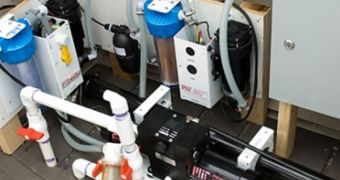With the world's freshwater resources in deteriorating condition, more and more experts are beginning to turn their attention to the ocean as a source for drinking water. MIT experts are leading the way.
In the wake of the Haiti earthquake that struck the impoverished Caribbean nation in January 2010, millions were left without access to clean drinking water.
Relief efforts, especially in the first few days of the international response, were focused on bringing as much bottled water as possible to the Haitian capital and its surroundings.
Emergency responders were looking at the ocean as a possible source of water, but desalination machines, which are used to extract the salt from seawater, are expensive and energy-intensive installations that take a lot of space.
But experts at the Massachusetts Institute of Technology (MIT) recently took a massive step forward in desalination technologies, when they created a device capable of producing drinking water from seawater using solar power alone.
The new system, developed by researchers at the MIT Department of Mechanical Engineering, can be deployed rapidly, and put to work right away.
Expert Steven Dubowsky was the leader of the Field and Space Robotics Laboratory (FSRL) group that developed the instrument. He is professor in both the Department of Mechanical Engineering and the Department of Aeronautics and Astronautics at MIT.
According to the group, the new desalination system can produce as much as 80 gallons of drinking water per day. It can function in a variety of atmospheric conditions.
“If it’s very sunny, the system will work faster and produce more water, but even when it’s cloudy, it will still produce water,” says MechE graduate student Leah Kelley.
Constructing a larger version of the prototype would cost $8,000, only a fraction of the costs associated with building a regular desalination plant, and could produce some 1,000 gallons of water per day.
Estimates show that emergency response crews could provide water for up to 10,000 people with only 24 desalination units. All of the tools would fit in a single C-130 aircraft.
The MIT crew presented the preliminary results they obtained with the desalination system prototype at the EuroMed 2010-Desalination for Clean Water and Energy Conference.
Video Credit: MIT

 14 DAY TRIAL //
14 DAY TRIAL //